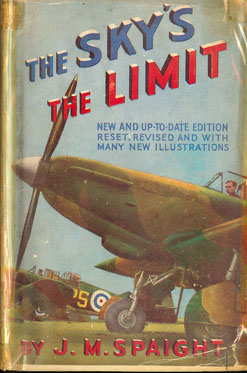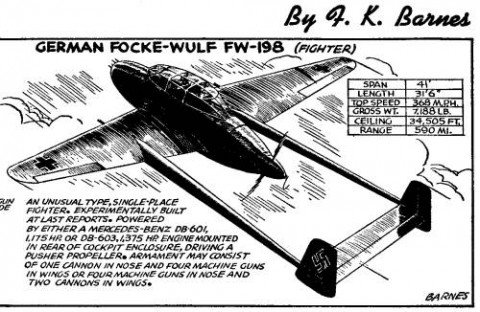Kate Moore. The Battle of Britain. London and Long Island City: Osprey Publishing, 2010.
Gavin Mortimer. The Blitz: An Illustrated History. London and Long Island City: Osprey Publishing, 2010.
2010 was seventy years after 1940, and in the usual way saw the publication of a number of new books about the pivotal events of that year. Almost none of which I read, or even bought. Mainly because, perhaps unfairly, I tend to suspect books published to coincide with historical anniversaries of simply reheating and reserving the same old stories. Which is fine for those readers not familiar with the old stories, but I don’t need half-a-dozen narrative histories of the Battle of Britain saying the same thing. One or two will do. (It’s a bit different for the Blitz, which as a whole attracts less attention from authors and publishers, and then usually only on specific raids or cities; though the tropes here are probably even more entrenched than for the Battle.)
So I was at first a bit reluctant to say yes when asked to review two new books by Osprey Publishing on the Battle and the Blitz. And I have to say my heart sank when I began to read the first of these, Kate Moore’s The Battle of Britain. Churchill is the problem here. We get Churchill the prophet, Churchill the orator, Churchill the airminded, Churchill the brave, Churchill the man of the hour. These are all real Churchills, but they neglect other Churchills: Churchill the cutter of defence budgets, Churchill the institutionaliser of the ten-year rule, Churchill the primary author of the Norwegian disaster. There’s no reason why the story of the Battle can’t be told without giving a more rounded picture of Churchill (i.e. than the one he himself bequeathed to us), but perhaps that’s not very commercially-minded of me.
But the book gets much better (and Churchill does not in fact appear prominently in it). Given the space constraints (200 generously illustrated pages, albeit in a coffee-table format), Moore does a remarkable job of telling the story of not just the Battle itself — understandably concentrating on the most intense days — but also the events leading up to it, from the immediate (the Kanalkampf, Dunkirk) to the more distant (the suppression and rebirth of the German air force). Not only that, but she writes with style and some verve, making my earlier fears happily redundant. The extensive use of eyewitness accounts (usually from oral interviews and memoirs, from pilots, WAAFs and civilians) also helps to keep the story fresh. And as usual with Osprey’s publications the illustrations are excellent, ranging from a downed and disguised British pilot photographed while on the run after Dunkirk to a contemporary painting by a 14-year old eyewitness in Kent entitled Night Raid 1940. (Both the interviews and the illustrations are largely drawn from the archives of the Imperial War Museum.)
Moore, correctly in my view, argues throughout that the balance of forces, of reserves and of losses actually favoured the RAF at all times. Yes, the Luftwaffe amassed an aerial ‘armada’ of nearly three thousand aircraft for its attack against Britain. But all its bombers and even its Me 110s were just targets for Fighter Command. In air superiority terms the numbers of fast single-engine fighters were all that mattered and these were nearly even. She is also sceptical of the Luftwaffe’s ability to do serious damage to the targets that mattered, such as RDF stations and sector control rooms. That’s even if it had recognised how important these were to the British air defence system, which it didn’t. Overall, while not minimising the bravery of Britain’s defenders (and its German attackers), Moore comes remarkably close to suggesting that in purely strategic terms the Battle of Britain didn’t really matter all that much. So this is no potboiler.
While it is physically similar to Moore’s book, Gavin Mortimer’s The Blitz has a very different focus. While he does cover the military aspects of the campaign, including the changing motivations of the Luftwaffe (for example in stepping up the intensity of its attacks early in 1941 to disguise the redeployment of aircraft in preparation for Barbarossa), Mortimer is understandably more interested in what was happening on the ground in Britain. He spends little time on the background to the Blitz (whether intentionally or not, this means the two books complement each other quite well), instead diving into the first day, 7 September 1940, and continuing through to the V-1 and V-2 attacks in the last year of the war. London gets much of the attention, of course, but by no means all: Coventry, Merseyside, Plymouth, Belfast and so on all get their due. (I was a little surprised to read that Lady Londonderry had written to her husband, ‘All sorts of rot going on here. Air raid warnings and black-outs! As if anyone cared or wished to bomb Belfast’, 129. But not very.)
This is a gripping story. Mortimer has an eye for telling details which vividly portray the terror and the surreality of the Blitz. For example, he describes the strange sights and smells of London’s docklands on the first night, when warehouses full of rum, paint, rubber, pepper, grain, sugar and tea went up in flames: tea fires, it seems, are ‘sweet, sickly and very intense’ (25). Then there was the woman seen by one special constable tottering down the street, holding an umbrella and singing ‘I’m Singin’ in the Rain’: but ‘The only rain coming down was the incendiary bombs’ (44). Of course there are also many stories, stirring, tragic, or both, of those who suffered under the bombs and those who tried to minimise their impact. The illustrations for The Blitz add immeasurably to its value: they are drawn almost entirely from the Daily Mirror‘s archives, and unlike some of the Imperial War Museum’s photographs have rarely been published since the war. In fact, many of them might not have been published even then: Mortimer discusses the censorship of images and provides examples of what was allowed to be seen by the public and what wasn’t.
The Blitz isn’t without problems. I think Mortimer overrates the effectiveness of Beaufighter nightfighters equipped with airborne interception radar, at least early on. He occasionally gives too much credence to primary sources: the Ministry of Home Security may have thought that German incendiaries worked by ‘burning the body of electrons’ (41) in the magnesium casing, but it’s scientific nonsense. But such errors are few. Overall this is an excellent book; together with The Battle of Britain it goes a long way towards undermining my scepticism about the value of anniversary publishing.
![]() This work is licensed under a Creative Commons Attribution-NonCommercial-NoDerivatives 4.0 International License.
Permissions beyond the scope of this license may be available at http://airminded.org/copyright/.
This work is licensed under a Creative Commons Attribution-NonCommercial-NoDerivatives 4.0 International License.
Permissions beyond the scope of this license may be available at http://airminded.org/copyright/.




Elektron, schmelectron. (Pity the poor author trying to make sense of their notes!) At least no-one’s talking about running exhaust stubs through magnesium wing structures or anything crazy like that.
I was a little surprised to read that Lady Londonderry had written to her husband, ‘All sorts of rot going on here. Air raid warnings and black-outs! As if anyone cared or wished to bomb Belfast’,
No, I can’t imagine there were any strategic targets in a city whose biggest industry was shipbuilding and second biggest was aircraft manufacturing. ah, the aristocracy…
Re: Whirlwind, that was a damn handsome aeroplane, and does anyone else have the strong impression that the Meteor and the Canberra designs borrowed quite a bit from it?
The Whirlwind was a very pretty plane, and the Peregrine, like the Taurus was equally pretty in a Swiss watch sort-of way. Too bad that the plane had such a high approach speed for a tailwheel configuration.
The reason that the Whirlwind looks so iconic is that it might be the first plane in service with wing-mounted engines where the designer dropped the nacelle below the wing. I vaguely recall reading some self-congratulation by the Avro designers about how much better that made the Lancaster. I think that they had improved airflow over the wings in mind rather than that aggressive, underslung look, but whatever.
This is the part where I launch into a discussion about how much money the Air Ministry spent on research and development, how it led to a wide range of technical changes and breakthroughs both inside aviation and out, and its obvious lessons for policy makers going forward. If I don’t actually write it, can we pretend that I did?
Yes. I liked the bit about sleeve valve engines especially. Can we also assume some reference to NACA?
Pah, who needs NACA when you’ve got the boffins at the RAE?
Erik: the story I recall is that Avro were as surprised as anyone at the Lancaster’s performance, as they simply adapted the standard Merlin power egg that had been developed for the Beaufighter. (Having Bristol and R-R design engine power eggs that were pretty much self-contained and could be interchanged without too much design effort is suspiciously rational – some might even say Teutonic…)
Alex:
And you might have thought her husband would have picked up a clue or two after being Air Minister for four years. But apparently not.
Jakob:
Or Romanian.